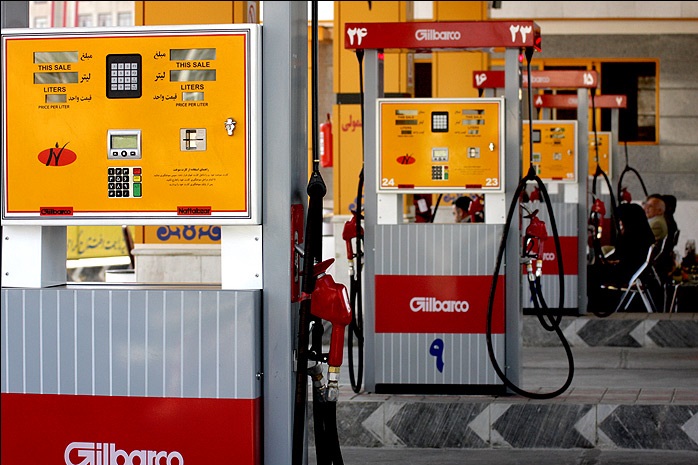Petroleum products, particularly gasoline, constitute a category of strategic and widely consumed products in Iran. Over recent years, despite the implementation of subsidy reform plan and gasoline rationing, consumption of this energy carrier has not declined, it has even increased in certain periods of time. Therefore, the issue of self-sufficiency in gasoline production has been seriously pursued by Iranian officials. Iran has been mulling investing $9 billion in its aging and new refineries in order to become self-sufficient in gasoline production, reduce sulfur content of its products and boost its refining capacity. Furthermore, Iran has invested $9 billion in new projects, leading to the reduction of sulfur production by 1,500 tones. A further $5 billion is being invested in other projects.
Recently, the distillation unit of the first phase of Persian Gulf Star Refinery became operational. Now the first phase of this refinery is producing 12 ml/d of euro-4 gasoline, 4.5 ml/d of euro-4 gasoil, 1 ml.d of euro-4 kerosene and 1.3 ml/d of euro-4 LPG.
By operating Persian Gulf Star refinery, the country will see its octane-95 gasoline and gasoil output increase by 35 and 14 million liters a day, respectively. During New Year holidays when fuel consumption reaches its peak, Iranians consume a maximum 70 million liters a day. Therefore, with the start-up of Persian Gulf Star, Iran will become an exporter of gasoline. This refinery would also produce 1.3 ml/d of heavy gasoil, 2 ml/d of liquefied petroleum gas (LPG), 3 ml/d of light jet fuel and 130 tons a day of sulfur.
Persian Gulf Star refinery is located in an accessible spot. Among its advantages are proximity to South Pars gas field, access to sea for water supply throughout operation and easy supply of raw materials and equipment with a view to facilitating exports to different spots across the globe.
When this refinery was planned to be built on 340 ha of land, two letters of credit (LC) were opened for it. The stocks of this project were divided among Indonesia's Star Petrogas Co., Oil industry Pension Fund Investment Company (OPIC), National Iranian Oil Refining and Distribution Company (NIORDC) and Persian Gulf Star Oil Company. But later on the Indonesian investor sold its 35% share to Iran's Social Security Organization (SCO) and kept only 15%.
South Pars gas field feeds 360,000 b/d of condensate to this refinery to be converted into light petroleum products.
So far, €3.8 billion has been invested in this refinery which still needs € 650 million. National Development Fund of Iran (NDFI) has agreed to provide the necessary finance.
Gas condensate is a hydrocarbon liquid dissolved in saturated natural gas that comes out of solution when the pressure drops below the dew point.
Gas condensate is often viewed as a byproduct in natural gas recovery; however, it is even more valuable than crude oil. According to studies, nearly 60% of gas condensates is converted into naphtha and 30% to gasoil after processing.
Based on calculations taking into account current prices of gas condensate, gasoline and gasoil, the margins of processing a barrel of gas condensate reach $20, which is four times the refineries fed with crude oil. That is to say gas condensate is a very valuable feedstock for refineries operating with simple technologies.
Persian Gulf Star, Symbol of Resilient Economy
Over the past three decades, Iran has been facing unilateral sanctions slapped by Western governments. Over these years, Iranian officials have sought to wean the country's budget off oil. An important section of resilient economy in Iran is to stop exporting gas condensate and instead processing it in the country. According to resilient economy, striving to complete the value chain of oil and gas and export products instead of unprocessed products would significantly boost the country's revenue and help the country become resilient to fluctuations in oil and gas prices.
Therefore, it is necessary to enhance oil refining capacity in Iran to complete the value chain of oil and gas condensate. In this regard, the Iranian Ministry of Petroleum intends to bring a total halt to gas condensate exports over the coming four years. Development of the country's refining capacity based on gas condensate prioritization can earn the country billions of dollars in revenue. To that end, Iran has the following gas condensate-fed projects under way: Persian Gulf Star refinery with a capacity of 360,000 b/d, Pars refinery with 120,000 b/d and eight 60,000 b/d Siraf refineries plus mini-refineries (with capacities of 20,000 b/d).
Some of the old refineries in Iran are located in Lavan, Isfahan, Tabriz and Bandar Abbas. These facilities have seen the quality of their products, particularly gasoline, improve in recent years. Construction of Pars, Anahita and Persian Gulf Star refineries is among new refining projects. Among them, Persian Gulf Star is of high significance for Iran's government as it would end the country's dependence on gasoline imports.
Courtesy of Iran Petroleum


Your Comment